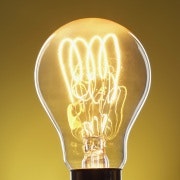Taking heat for the solar charge
Some years ago I made the decision to put PV panels on the roof of my house. Being capital constrained I needed to choose between an air-conditioner and PV panels. After a little cogitation I decided on the latter because, although slightly harder on the hip pocket initially, it would pay for itself quickly and in the fullness of time I would double my money. The discomfort of sweating through a few Melbourne heat waves was not sufficient to induce me to forego this gain.
On top of this, I did a little digging and found that the Australian Energy Markets Commission (AEMC) and the Energy Networks Association said that the installation of air-conditioners was driving peak demand and that this was causing enormous increases in expenditure on poles and wires.
So, I figured that my decision to forego an air-conditioner and instead install a PV system would be saving my local network service provider, Citipower, a motza.
How wrong was I! The AEMC has just recently released a report telling me that, actually, all that investment in poles and wires to meet rising peak demand has had almost no impact on electricity prices. And now the Energy Supply Association is suggesting that perfidious PV owners that have selfishly decided to meet their own needs should pay more for their reduced use of the network, because otherwise others are having to make up the difference.
Well, well, well, now I am confused. This sounds to me like my friendly supermarket charging me more for bananas when a cyclone flattens the banana trees, but then charging me a gratuity if I respond by growing my own. As the French might say, ‘c’est bizarre’. There must be something fishy going on here.
After an explosion of PV construction since 2010, one in 10 households in Australia now have PV systems on their roofs. They produce enough electricity to meet about 10 per cent of all Australian households’ annual electricity needs. Ah ha, there’s the clue. This is starting to look like real competition.
In fact, no brownie points for recognising that network service providers are none too pleased about this: rivalry can be uncomfortable. As a consulting economist I feel their pain.
But no use fighting it, that's the way of the world: new entrants and innovation upsetting apple carts. The new entrants, all consumers, most economists and some policymakers love it. And, most fortunately for my network service provider, the Australian Energy Regulator has allowed it to earn profits as if it is a business that takes risk to compete in a market.
Phew, I think I can sleep easy. My PV system is leaving me better off, I am doing my bit for global warming, I am saving my network service provider unnecessary expense. And on top of this my network service provider is being rewarded for bearing market risks that it is now having to face, at least from some consumers.
All I need to do now is ensure that my network service provider does not have a go at my neighbours to get back the income they have lost from me. In fact I have noticed that they are pushing the regulator to cap their regulated revenues instead of their regulated prices so that they care less if their consumers leave – what they lose from Peter they get back from Paul. And of course if they can get their income through fixed charges, life will be good again, no need to care if those pesky customers go it alone. Note to self (and others): must try to do something about this.
Oh, and just in case you get the impression that I have it in for Citipower, I would like to say that they do a sterling job. I cannot recall the last time the lights went out. And they are charging households just 6.4 cents per kilowatt hour for their services – the lowest of all their peers. To boot, their fixed charge as a percentage of household bills is one of the lowest in the National Electricity Market.
My sympathies to those households in New South Wales and Queensland who are being charged up to three times more, and face much higher fixed charges. “Cost reflective tariffs” I think they call it. Yeah right.
Bruce Mountain is a Director at Carbon Market Economics (CME).
















